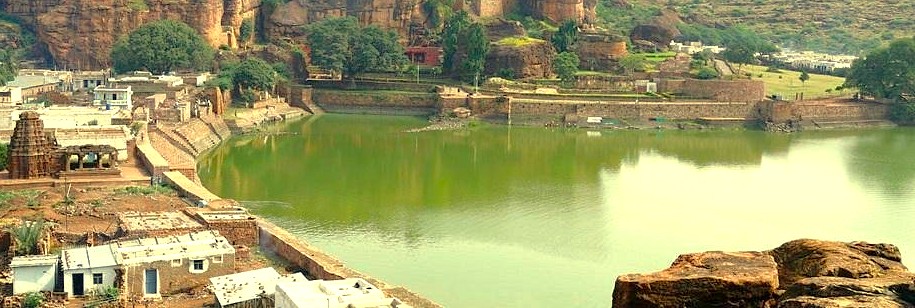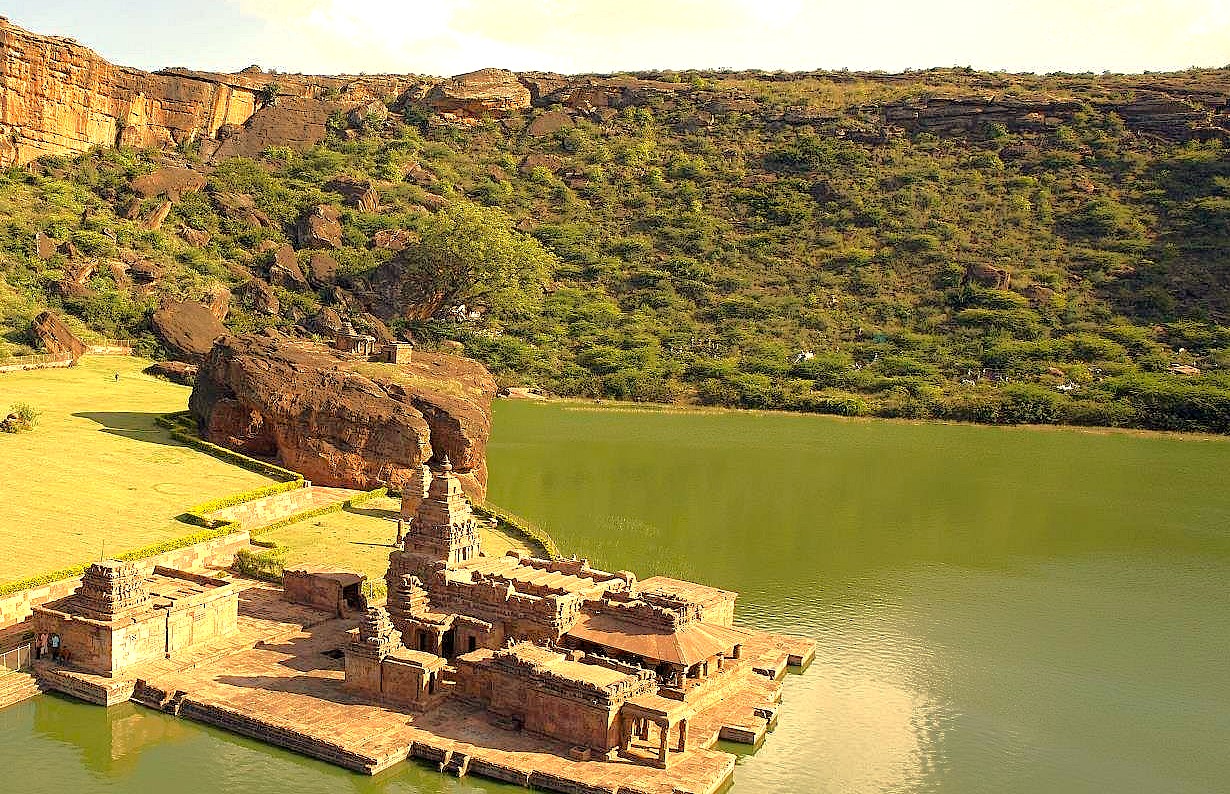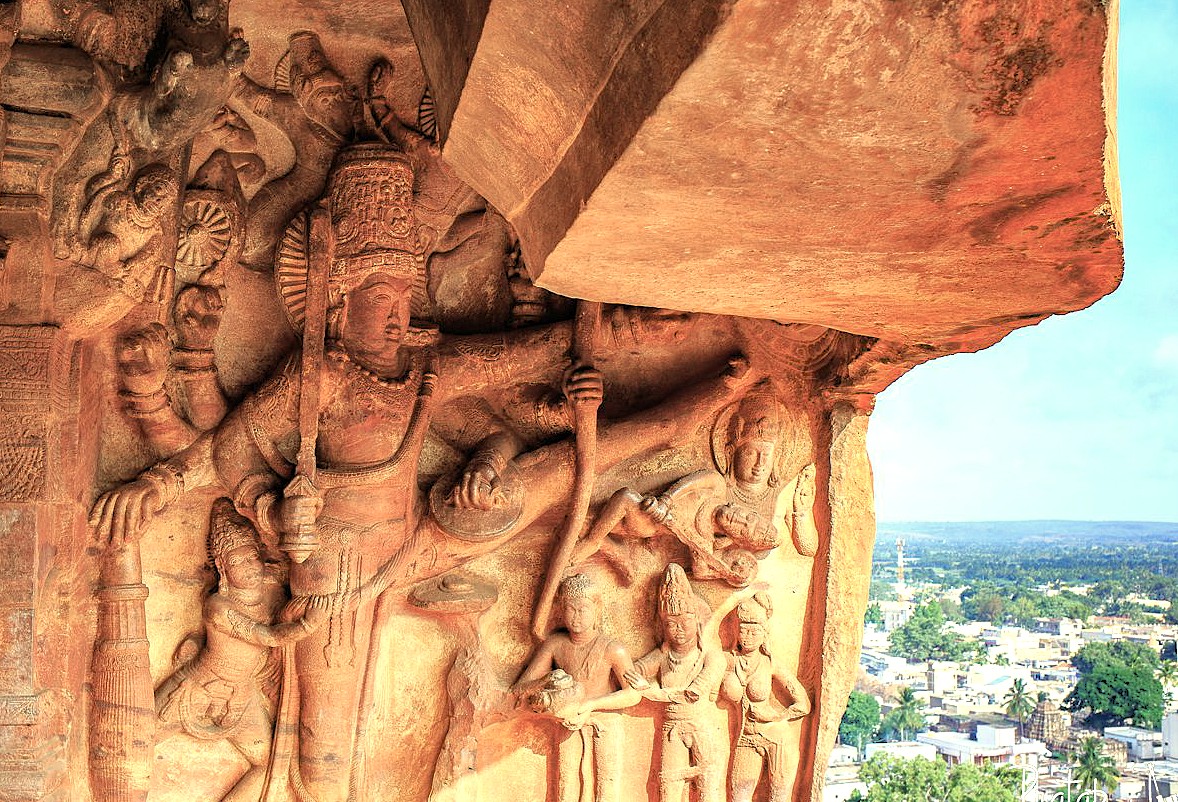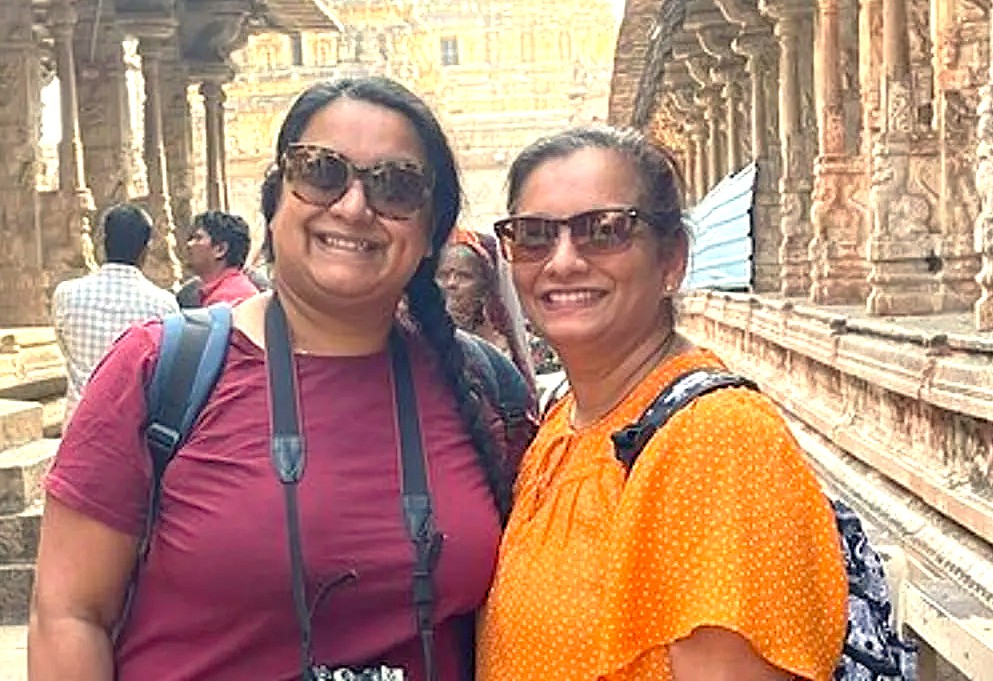
Echoes of Ancient Lands
Agastya Lake Badami India
Mother Masala Tours
Stunning Lakeside Heritage
Agastya Lake Badami India. Situated in Karnataka. Serves as the beautiful centerpiece of this historically rich region. Surrounded by striking red sandstone cliffs, it was carved into the landscape during the reign of the Chalukyas in the 6th century, making it an important site both geographically and culturally. The lake, originally constructed to serve as a reservoir, played an essential role in sustaining the local population during periods of drought and was integral to the town's irrigation systems. The Lake has been central to several historical events, including the royal processions of the Chalukyan rulers, who would often gather here to celebrate victories and perform religious rituals.

Agastya Lake Badami India: Sacred Spaces
Flanked by significant historical structures that enhance its cultural importance. The nearby Bhuthanatha Temple and Shivalaya temple complex add depth to our understanding of the region's religious heritage. These temples are adorned with intricate carvings that depict various deities and mythological scenes, offering us a glimpse into the artistry of the Chalukyan Dynasty. Among the artifacts found in the vicinity are ancient inscriptions and sculptures that not only highlight the artistic skill of the period but also serve as records of the social and religious practices of the time. The presence of these sites provides us with a unique opportunity to explore the heritage of a Unesco World Heritage Site.
Ancient Mosaics: Impeccable Craftsmanship

The craftsmanship displayed in the temples around the lake exemplifies the skills of artisans from the Chalukyan period. The Bhuthanatha Temple, dating back to the 6th century, features exquisite carvings that highlight the dedication and artistry of its creators. Engaging with the ornate sculptures, we can appreciate how each figure tells a story of devotion, faith, and mythology. Craftsmen during this era utilized local stones to build structures that have withstood the test of time. The meticulous carving of stone into intricate designs reveals a high level of artistry.
The Pulse of the Local Community
Agastya Lake Badami India. The community surrounding the Lake is characterized by friendliness and hospitality. The local residents take pride in sharing their heritage and are deeply connected to the traditions that have been passed down through generations. Their unique qualities foster an atmosphere that feels both welcoming and engaging, allowing us to feel at home as we explore the area.
Capturing the Magic: A Photographic Haven

This location reveals visuals that capture the character of the lake. The calm waters, shaped by towering red sandstone cliffs, offer a landscape inviting photography. As we walk along the edge, there are many angles and perspectives available, each providing a unique view of the scene. The light shifts throughout the day, changing the look of the cliffs and water. Paths run close to the lake, making it easy to spot interesting rock shapes and patterns in the stone. Distant views look out across the water to more cliffs and open sky. The area feels peaceful, with open spaces perfect for relaxed exploration.
Festivals of Devotion: Honouring the Sacred and the Divine
The annual festival of Mahashivaratri, celebrated in February - March, brings together locals at the Lake and nearby temples. This event, dedicated to Lord Shiva, includes night-long vigils, prayers, and traditional rituals. On the eve of the festival, the temple becomes a hub of spiritual activity, drawing together families and friends in celebration. During this festival, intricately decorated offerings are presented, and the atmosphere transforms into one filled with devotion and collective spirit. You may witness lively dances, the ringing of bells, and the chanting of mantras, creating an immersive experience that connects us to the sacred traditions of the area.
The Connection with the Gods

Agastya Lake Badami India. The primary deity is Shiva - who governs water and life. The legends surrounding recount stories of how he provided protection and nourishment to the local population. Bhutanatha is invoked during times of drought and hardship. Locals say that the temple was established to honor Bhutanatha, after he appeared to a devotee seeking help to alleviate the suffering caused by a drought. This divine intervention is celebrated, reminding the community of their connection to the spiritual realm and of faith in overcoming challenges.
Ancient Technologies: Sacred Sound, Geometry & Astrological Influences
The designs reflect the use of sacred geometry, which ienhance's spiritual and healing frequencies. The layout of the structures aligns with cosmic principles, Vastu Shashtra, providing a sense of harmony and balance in the space. These geometrical formations not only contribute to the visual appeal but also create an atmosphere conducive to meditation and introspection. Materials used such as granite and sandstone, are durable and also believed to possess energetic properties. The resonance of these stones produces sound frequencies that enhance spiritual practices. The Solfeggio frequencies, such as 528 Hz, are connected with transformation and DNA repair, and are present in the space through the vibrations created by chanting and bell ringing.
Serendipitous Meetings: Beyond the Main Path

As we explore the town, we notice various cultural elements revealing aspects of the local lifestyle. Artisans in small shops craft goods, including textiles and pottery, using traditional methods with steady hands. Street corners often display collections of finished pieces, each with colors and patterns that reflect regional preferences. Workshop doors stay open, inviting us to see daily activities as artisans work with different tools and materials. Sounds of creation fill the air, from weaving looms to shaping clay. These crafts reflect both history and function. The streets guide us along rows of shops, each offering something distinctive.
Resilience and Renewal: Overcoming Adversity’s Challenges

Agastya Lake Badami India. Throughout history, this area has faced significant challenges that have shaped its identity and resilience. In 1404, a major conflict arose during the reign of the Vijayanagara Dynasty involving the Bahmani Sultanate, which led to a series of battles that impacted the local population and landscape. Natural disasters have also taken their toll. In 1882, severe flooding devastated the area, damaging homes and agricultural resources. The local community, however, exhibited resilience, pooling their resources and efforts to rebuild their homes and restore order.
Urban Legends: Strange Sightings, Myths and Mysteries
Local folklore is filled with intriguing tales that add an aura of mystery to the history of the surrounding area. One tale includes the legend of a hidden treasure lying beneath the waters of the lake, said to belong to a mythical king who drowned while fleeing a rival force. Another popular story involves sightings of ethereal beings who appear at dusk, believed to be the spirits of past devotees honoring their commitment to the temples.
Awaken Your Spirit of Adventure, Join Us

We explore the lake and its surroundings, moving at an easy pace. The water appears calm, with rocky paths that trace the shore and lead toward ancient structures. Nearby, temples stand tall, their stonework displaying the skill of earlier builders. Local food stalls line some streets, featuring a selection of snacks and small meals unique to this area. A short walk takes us past shops and markets where handmade goods reflect regional styles and traditions. The sound of people talking, simple melodies, and the scent of fresh spices float through the air.
Symphony of Generosity: Offerings from Wanderers to Residents
The interaction between those who come to experience this area and the local community cultivates a sense of shared purpose. Local businesses thrive, benefiting from the attention drawn to Augusta Lake, while residents show a warm welcome that enriches the experience for everyone involved. This exchange fosters a thriving cultural environment where tradition and modernity coalesce, allowing us to learn from each other while contributing to the preservation and continuation of unique customs.